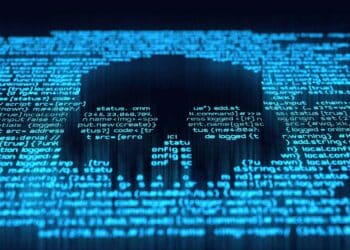Cybersecurity
ChatGPT Plus
Italian cybersecurity firm Exein raises €100 million to accelerate growth of embedded security platforms
Cybersecurity firm Exein SpA (Italy) recently closed a significant €100m funding round to drive the acceleration of the growth of...
Read moreDetailsGermany brings NIS-2 rules into force, widening supervisory powers and toughening penalties
In Germany, the US has begun putting the NIS-2 law into effect, tightening the managerial cybersecurity regulations, enforcement, and penalties...
Read moreDetailsEuropean Commission awards EU cybersecurity framework contract to Capgemini-led consortium
The European Commission awarded a multi-million, four-year contract to Capgemini, along with partners Airbus Protect, PwC, and NVISO. This contract,...
Read moreDetailsGermany publicly attributes cyber operations targeting air traffic control and elections to Russia’s GRU
Germany's foreign ministry reported that the country has accused Russia's military intelligence agency, the GRU, of carrying out cyberattacks on...
Read moreDetailsEuropol shuts down major cryptocurrency-mixing service in “Olympia” crackdown, confiscating 12 TB of data and $29 million
In an operation named Non-Mixer, Europol and other law enforcement agencies worldwide took down what is believed to be the...
Read moreDetailsZurich-based Soverli secures €2.2 million to commercialize sovereign-grade smartphone security technology
Soverli, a mobile security startup, has just become able to fully develop its mobile security technology after raising €2.2 million...
Read moreDetailsCyber intrusion disrupts email systems at France’s interior ministry, officials confirm
The Interior Ministry of France experienced an email system breach and cyberattack, which allowed attackers to obtain some internal documents....
Read moreDetailsCl0p ransomware breach at Barts Health NHS exposes sensitive information on patients and employees
One of the newest health care service providers in London, Barts Health NHS Trust, recently revealed what might be the...
Read moreDetailsCrowdStrike’s 2025 Europe threat report predicts escalating, coordinated ransomware and nation-linked cyber operations
CrowdStrike has just released its 2025 European Threat Landscape Report, and for the second consecutive year, they observe the ransomware...
Read moreDetailsEuropean transit networks raise cybersecurity concerns over increased deployment of China-built electric buses
Europe has been expanding the use of electric buses in its cities while trying to increase its use of sustainable...
Read moreDetailsEurofiber cyberattack reveals sensitive infrastructure-related customer data across multiple European markets
Eurofiber, which offers digital infrastructure management throughout Europe, has had sensitive customer data breached following a cyber attack. Eurofiber has...
Read moreDetailsUK supply chain cyber incidents spike as weaknesses in third-party vendors become major corporate threat
The UK has seen an increase in vulnerability to cyber interruptions in the supply chain, especially in 3rd party vendor...
Read moreDetailsGoogle Pixel lineup receives Android 16 and December 2025 update, adding a wave of new features
The Google Pixel line will now be getting Android 16. Google's new phone operating system is the most significant addition...
Read moreDetailsCross-European law-enforcement raid shuts down illicit crypto-mixing service used in ransomware laundering
EU law enforcement has dismantled crypto mixers that were used to launder ransomware proceeds. With the coordination of Europol, German...
Read moreDetailsEurope sees more than 2,100 organizations targeted as ransomware extortion reaches record levels
Recent research reports that more than 2,100 organizations have fallen victim to ransomware cyberattacks, as CrowdStrike cited an increase in...
Read moreDetailsIberia suffers data exposure after third-party breach, underscoring aviation’s growing supply-chain risks
Iberia, one of Europe's most traditional airlines, experienced a successful cyberattack recently. A third-party supplier was targeted by a hacker,...
Read moreDetailsIberia suffers data exposure after third-party breach, underscoring aviation’s growing supply-chain risks
Iberia, the Spanish airline, is exposing some of the growing cyber and data exposure risks affecting the airline industry. Last...
Read moreDetailsLondon councils hit by cyberattack, prompting emergency response and service shutdowns
A cyber attack that targeted IT systems and necessitated an emergency response across the capital triggered the shutdown of critical...
Read moreDetailsEurope now accounts for over one-fifth of global ransomware and extortion cases, report finds
As per the latest reports in the field of cybersecurity, Europe has become the main center of ransomware and extortion...
Read moreDetailsGermany alarmed as many firms lack cyber defenses amid deep cybersecurity-skills shortage
Germany is going through major cybersecurity problems because some firms lack the proper training, and professional cybersecurity training is missing....
Read moreDetailsENISA warns EU public administrations remain critically vulnerable to cyber threats
The European Union Agency for Cybersecurity (ENISA) states that European Union member states are currently experiencing Cyber Attacks. The increasing...
Read moreDetailsBelgium rolls out ‘Hack the Government 2025 to identify vulnerabilities across public systems
Belgium started “Hack the Government 2025” to engage ethical hackers to find gaps in the government’s online systems. The Belgian...
Read moreDetailsSlovenia’s grid operator ELES joins new Europe-wide network to bolster cybersecurity defenses
Slovenia’s transmission system operator (TSO), ELES, is joining a new European network focused on expanding cybersecurity and improving systems for...
Read moreDetailsEDPS drill reveals major gaps in staff preparedness for handling personal data breaches at EU bodies
A simulation called the 'PATRICIA Test 2025' was conducted by the European Data Protection Supervisor (EDPS). In their report, the...
Read moreDetailsENISA broadens its mandate to play a larger role in coordinating cybersecurity vulnerabilities across the EU
The European Union Agency for Cybersecurity (ENISA) becoming a Common Vulnerabilities and Exposures (CVE) Program Root marks a significant advancement...
Read moreDetailsEurofiber confirms hackers stole data from its French subsidiary following cyberattack
Eurofiber, the digital infrastructure service provider from Europe, experienced the first of its kind recording of a data breach in...
Read moreDetailsEU public administrations remain highly exposed to cyber threats, ENISA warns in new assessment
The public administrations all across the EU are undergoing a phenomenon never seen before with regard to cyber attacks. This...
Read moreDetailsNew study lays out practical strategy for strengthening Europe’s digital sovereignty
A recently published report provides a detailed strategy to protect Europe's digital sovereignty while keeping Europe's position open and competitive...
Read moreDetailsEurope retreats from elements of its flagship privacy and AI legislation
European Union (EU) policymakers are making rollbacks of protective, digital regulations - such as the General Data Protection Regulation (GDPR)...
Read moreDetailsGerman Bundestag approves legislation implementing the EU’s NIS2 cybersecurity directive
On 13 November 2025, the German Bundestag passed new cybersecurity compliance regulations, marking the first of many such regulations in...
Read moreDetailsUK government introduces Cyber Security and Resilience Bill to strengthen national network protections
The UK government has introduced the Cyber Security and Resilience Bill in Parliament, which will assist and strengthen the UK’s...
Read moreDetailsGermany moves to limit Chinese network equipment suppliers after long-running security concerns
Germany has declared a major new policy to keep Chinese tech giants Huawei and ZTE out of its telecommunications infrastructure....
Read moreDetailsEurope turns to tech giants and online influencers to counter hybrid information threats
The European Union (EU) is facing challenges to democracy due to hybrid threats that mix misinformation, cyber warfare, and foreign...
Read moreDetailsPro-Russia group NoName057(16) knocks Danish government and defense sites offline in DDoS wave
Recently, a series of DDoS attacks carried out by the pro-Russian hacker group NoName057(16) targeted Danish government and defense websites....
Read moreDetailsEurofiber hack exposes sensitive infrastructure information across multiple European states
One of Europe's key providers of fiber-optic connectivity and cloud services, Eurofiber, has had a major data breach that is...
Read moreDetailsUK rolls out new Cyber Security and Resilience Bill to strengthen national defenses
The addition of the Cyber Security and Resilience (Network and Information Systems) Bill to Parliament in the United Kingdom is...
Read moreDetailsEU countries and the Commission conduct joint drill to assess cyber-crisis readiness
Member states, as well as the European Union (EU), met with cybersecurity officials and together took part in the 'Blueprint...
Read moreDetailsRansomware and extortion incidents rise sharply across Europe, cybersecurity firms report
In Europe, cybersecurity specialists are noticing a big increase in ransomware and extortion attacks, which are escalating rapidly like never...
Read moreDetailsCyber incident disrupts operations at U.S. Congressional Budget Office
Reports confirmed that CBO's systems were compromised and the services were attacked on 17 July. The tenuous and undeclared state...
Read moreDetailsENISA warns of rising wave of DDoS attacks on European government networks
The European Union Agency for Cybersecurity (ENISA) has publicly attributed DDoS activity against public administration targets, which have become frequent,...
Read moreDetailsCrowdStrike’s 2025 Europe threat report forecasts surge in state-linked and coordinated ransomware attacks
The recent CrowdStrike Threat Landscape Report highlights that the decline of the cyber threat landscape in Europe was due to...
Read moreDetailsReport finds EU public institutions facing spike in DDoS attacks and data breaches
A new report by the EU Agency for Cybersecurity (ENISA) indicates a worrying increase in cyber incidents on the public...
Read moreDetailsCyberattack disrupts operations at U.S. Congressional Budget Office
The Congressional Budget Office (CBO) officials have stated that they have been a target of a foreign cyberattack. The attack...
Read moreDetailsHyundai AutoEver America reports cybersecurity breach affecting corporate systems
Hyundai AutoEver America LLC, the automotive IT software solutions part of Hyundai Motor Group, confirmed a serious breach of sensitive...
Read moreDetailsU.S. prosecutors allege cybersecurity experts operated large-scale hacking enterprise
When federal prosecutors in the U.S. accused 3 cybersecurity experts of running a massive ransomware operation targeting American companies. This...
Read moreDetailsCritical Windows graphics flaws could let hackers execute remote code, experts warn
Security experts are warning about a newly discovered series of vulnerabilities in the graphics components of Microsoft Windows that could...
Read moreDetailsBT Group teams up with CrowdStrike to deliver AI-driven cybersecurity solutions for UK small businesses
BT Group has announced a strategic collaboration with global cybersecurity leader CrowdStrike to launch a new AI-powered security service, BT...
Read moreDetailsU.S. indicts cyber experts linked to BlackCat/ALPHV ransomware operations
Three employees in the U.S. working in the cybersecurity field are facing jail time for allegedly causing ransomware attacks in...
Read moreDetailsAtos opens new cybersecurity and infrastructure operations hub in Seville
Atos, a global leader in digital transformation, delivers the new Cybersecurity and Infrastructure Management Operations Center in Seville under the...
Read moreDetailsReport reveals 78% of organizations suffered email-related breaches over the past year
A new study from Barracuda Networks demonstrates an alarming increase in email security breaches, with 78% of global organizations hacked...
Read moreDetails


















































